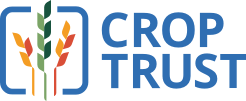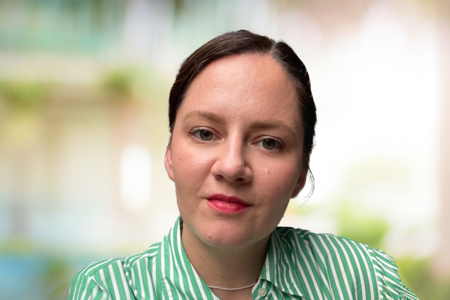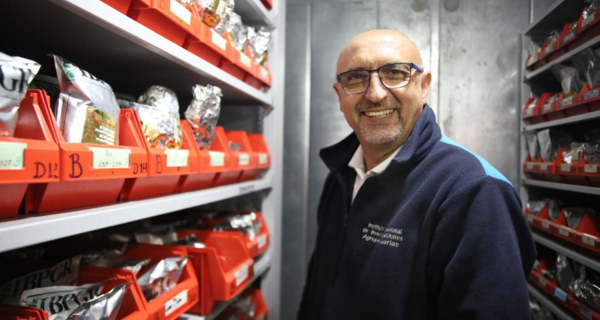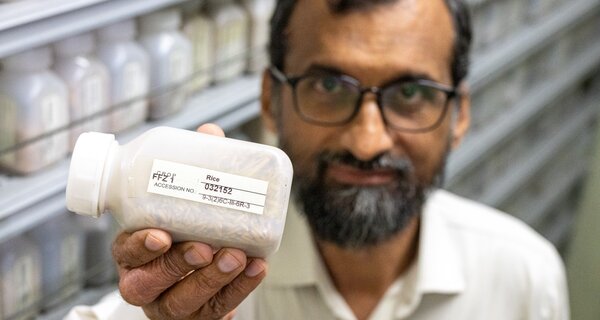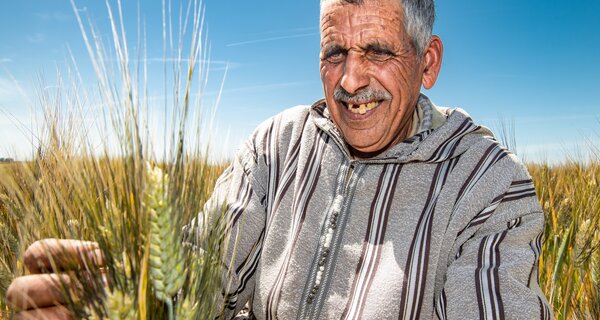Morocco’s Genebank Steps Up: From Settat to Svalbard
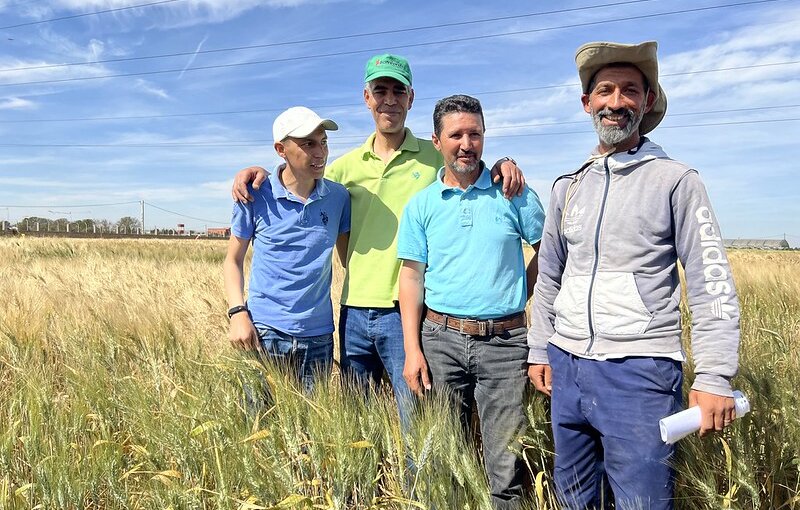
Dr Ali Sahri (first from left) and several staff members from Morocco’s national genebank INRA stand proudly in a durum wheat field. Photo: Paul Neate/Crop Trust
24 October 2025
In a wheat field an hour’s drive south of Casablanca, Dr Ali Sahri and his team pose for a photo as the swaying spikes tickle their legs. Behind their smiles lies an awesome responsibility: to safeguard Morocco’s unique crop diversity and make sure that it remains available to farmers, breeders and researchers forever.
From their base here in Settat, this October they’ve taken that mission to the top of the world. INRA, Morocco’s National Institute of Agronomic Research, deposited over 860 seed samples from its genebank in the Svalbard Global Seed Vault in Norway. The shipment included landraces and wild species of wheat, barley, maize, sorghum, chickpea, lentil, faba bean, pea and aromatic plants such as lavender, cumin and black cumin.
“These samples are unique,” says Dr Sahri, the genebank’s manager. “Most were collected in Morocco by INRA scientists or contributed by local researchers, and many have no duplicates anywhere else. Backing them up in Svalbard means they’ll be safe no matter what happens here at home.”
Dr Sahri is one of the youngest national genebank managers supported through the Crop Trust’s Biodiversity for Opportunities, Livelihoods and Development (BOLD) project. Soft-spoken but determined, he leads a small team with a big mandate. And big smiles.
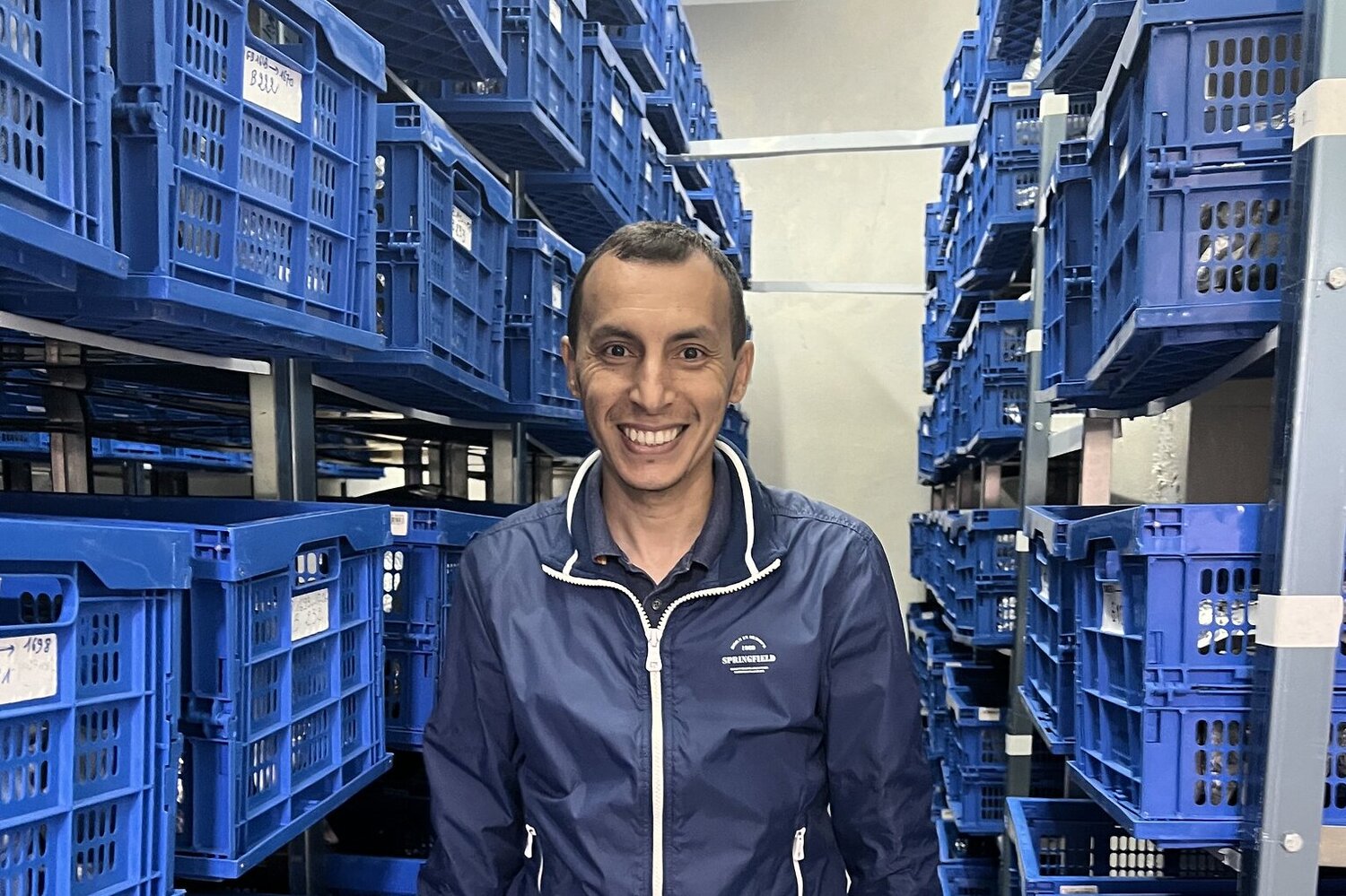
Dr. Ali Sahri, head of the INRA Settat genebank in the cold room where the genebank’s active collection is stored. Photo: Nelissa Jamora/Crop Trust
Seeds of a Nation
The genebank is young, too – just 22 years old. But Morocco’s national collection, housed at INRA’s Settat regional hub, has grown quickly. Today, it has over 72,000 samples representing over 560 species. Wheat and barley dominate, but the collection also includes lentils, chickpeas, forage legumes, and wild relatives that thrive in Morocco’s semi-arid environments.
Much of this diversity was gathered through collecting missions that took the team from the Rif Mountains in the north to the desert oases of the south. Thousands more samples were repatriated from international genebanks to ensure Morocco’s own heritage is easily accessible at home.
The genebank shares its contents widely. Every year, 500 to 800 samples are distributed to researchers and breeders, contributing to research studies and crop improvement programs across Morocco and beyond.
Among the material that is making an impact outside the genebank are wild cereal relatives chosen for their drought tolerance and disease resistance. INRA breeders are using these plants in pre-breeding programs to develop new, climate-resilient wheat varieties for Moroccan farmers.
The genebank has also shared seeds of Moroccan vegetable landraces – such as tomatoes and peppers – with a local farmers’ association. The initiative helps diversify local production and strengthen on-farm conservation of valuable crop diversity.
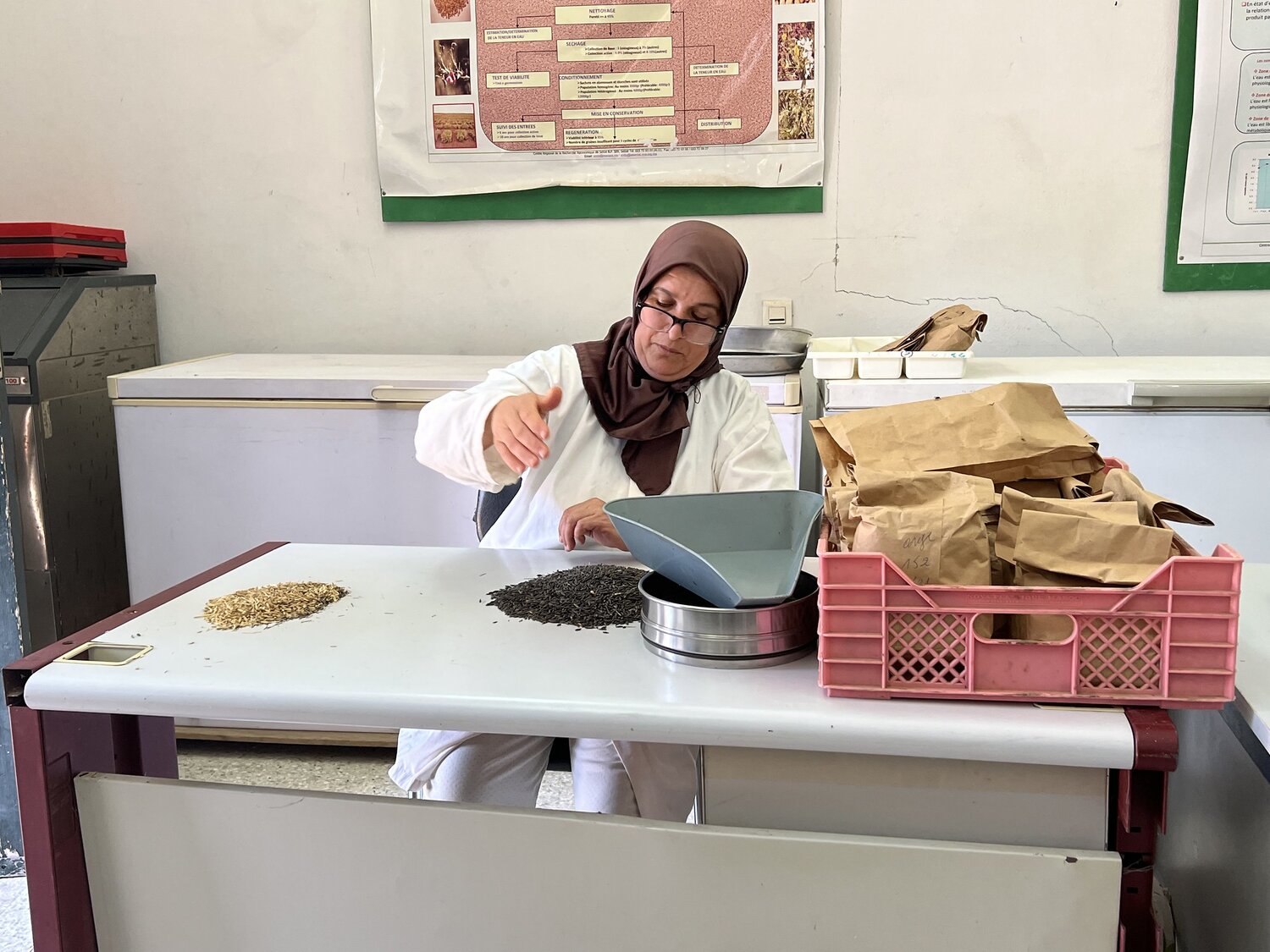
Ms. Malika Bouarif, genebank technician, cleaning a sample of black barley from Ethiopia before it is dried and put into storage. Photo: Nelissa Jamora/Crop Trust
Behind the Scenes
The genebank’s cold rooms are plain but effective. Metal shelves lined with blue and white plastic crates hold thousands of small aluminum foil packets filled with seeds. Over 22% of INRA’s collection can be consulted on Genesys, the world’s largest portal to information about crop diversity conserved in genebanks, which records each sample’s identity and origin, with more being added as documentation progresses.
In recent years, the team has strengthened its quality management system through the BOLD project, ensuring that every step – from drying and packaging to documentation – meets international standards. In 2024 alone, they regenerated more than 1,400 seed samples and ran 5,000 viability tests to make sure seeds were healthy and ready for use.
Outside the genebank’s offices, barley and lentil plants enjoy the bright sun – they have been grown from those packets kept in storage. After harvest, fresh seeds will go back into the cold room.
Partnerships that Grow Beyond Borders
Morocco’s genebank doesn’t work alone. Its collaboration with the International Center for Agricultural Research in the Dry Areas (ICARDA), a CGIAR center based in Rabat, has strengthened research, training and breeding. The partnership helps Moroccan breeders access diversity from all over the world and develop drought-tolerant, disease-resistant crop varieties suited for drylands.
“These partnerships make a difference,” says Dr Sahri. “They connect our local work to global goals.”
Dr Zakaria Kehel, ICARDA’s Head of Genetic Resources, agrees. “National genebanks like INRA hold diversity that doesn’t exist anywhere else – landraces and wild relatives that are essential for breeding. When we combine that with CGIAR’s research capacity and technology, both sides benefit. It’s a partnership built on trust and shared purpose.”
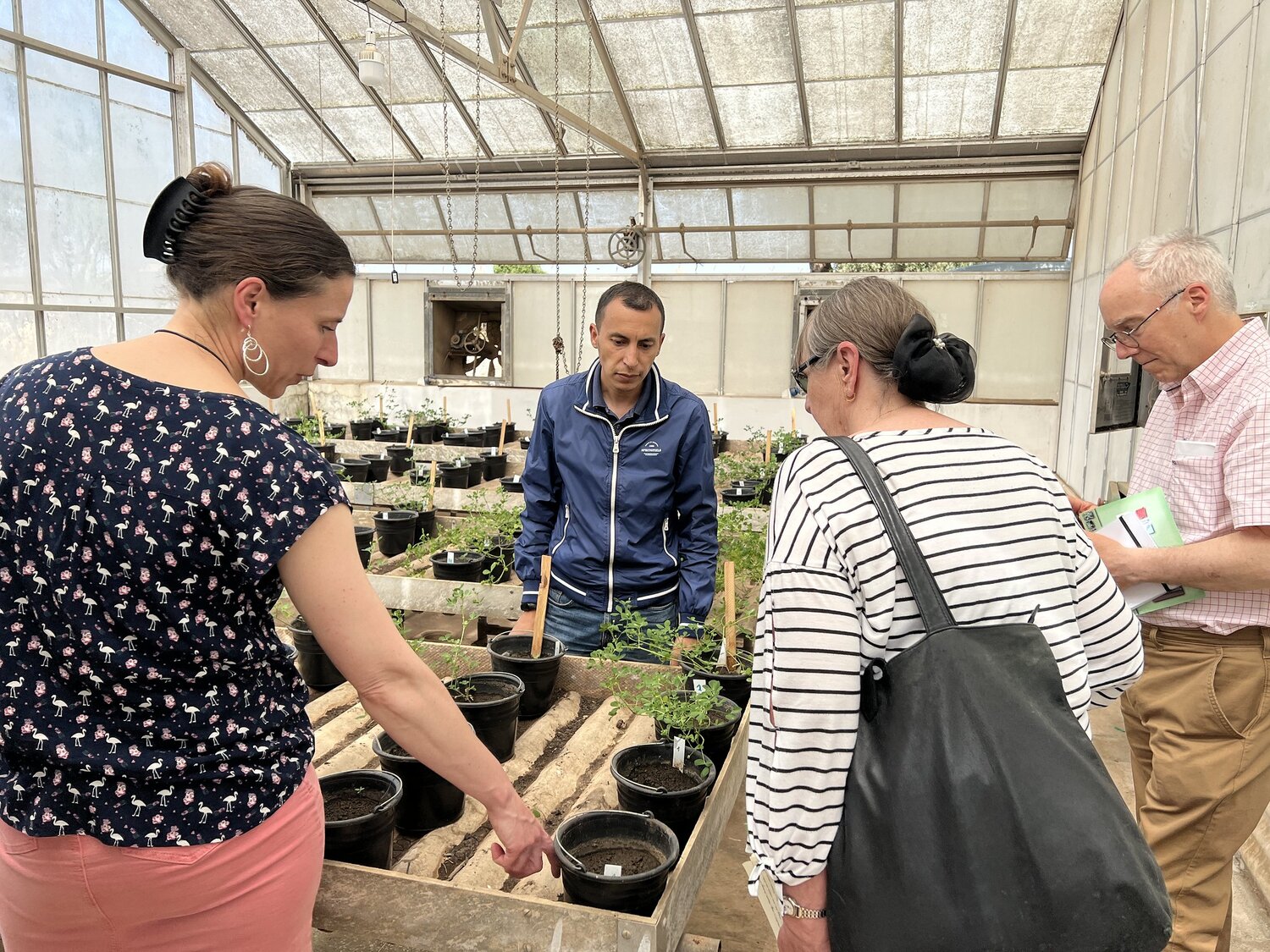
Greenhouse at the INRA Settat genebank. Photo: Nelissa Jamora/Crop Trust
Looking Ahead
From its beginnings in 2003 to its evolution into a national network for crop diversity conservation, the INRA genebank has come a long way. Its progress – stronger quality management, modern databases, and safety backups from Settat to Svalbard – shows what can be achieved by a determined, committed team, even with limited resources.
INRA is now constructing a new National Center for Genetic Resources in Rabat. Once complete, it will unite Morocco’s collections of crops, livestock and microorganisms under one roof. The Settat genebank has already begun preparing a copy of its collections for long-term safeguarding in the new center, while continuing as the country’s main hub for the distribution of crop diversity.
As higher temperatures, drought and land degradation continue to challenge Morocco’s agriculture, the work of INRA’s genebank, and its global partnerships, have never been more important. In a quiet building surrounded by farmland, a small team is ensuring that hope – in the form of seeds – endures. They have smiles on their faces.
Categories: For Partners, BOLD, Food Security, Nutritional Security
